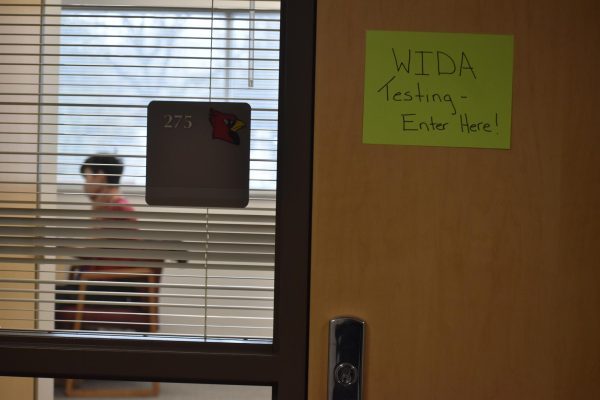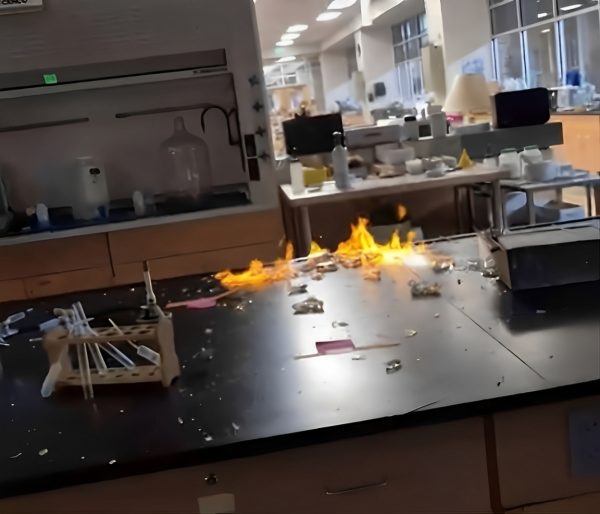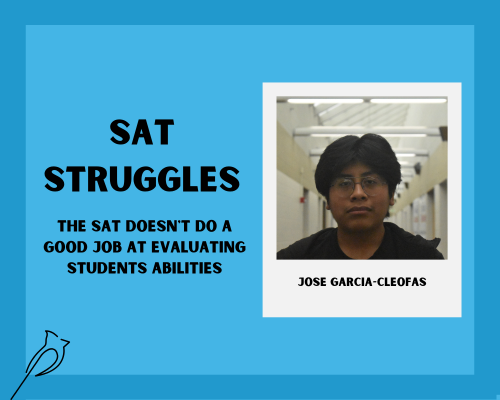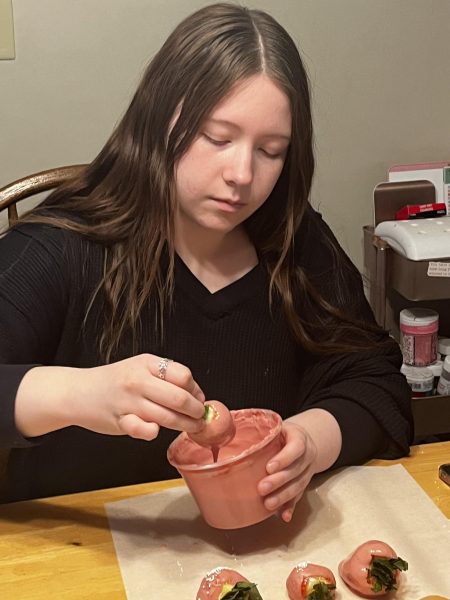Success, redefined.
Administration alters recognition of the best and brightest
At the end of his freshman year, with just three days of school left, sophomore Noah Clark found out information he felt would devalue all the hard work he had done.
“I immediately was distraught about it,” Clark said. “I was definitely not enthralled about what was happening.”
What Clark found out that day was that starting with his class, the class of 2021, class rank at SHS would no longer be used.
In the 2017-2018 school year, Perry Township made the decision to switch from the class rank system to the Latin rating system. Many students like Clark were initially angered by the change. This year, Principal Brian Knight chose to expand the STARS program, which recognized the top 20 students at SHS, to include summa cum laude, or those who have a 4.0 GPA or higher. This has caused both upset and excitement within different members of the student body.
Those who were unhappy about class rank believed that it was important in regards to motivation, competition and scholarships. Some students currently concerned about the STARS program are afraid that the administration is giving other students “something for nothing,” Knight says.
To senior Lauren Stucky, the special recognition she would receive for being in the top 20 was something she was looking forward to. But now, upon learning of the change to the STARS program, Stucky feels frustration.
“I don’t think it was expressed to us very clearly that it (was changing),” Stucky said. “So it was kind of unfair when we were all expecting it and were excited for it.”
Now, according to Stucky, she and a few other students in the top 20 of the Senior Class are in the process of making their own top 20 poster to hang around the school. They plan to create and design the poster themselves, then print it and hang up as many as possible.
“It’s kind of like a ‘If you’re not going to do it, we’ll do it ourselves,’ thing,” Stucky said.
Senior Hollynd Givens feels differently. She is 27th in her class and now excited to be included in the STARS program. She explains that all of the GPAs near the top 20 are close to each other, and each student had to put forth equal amounts of effort to reach that point.
“We are all really close,” Givens said. “That’s why I like being a part of (the program). I feel like I worked just as hard.”
As a freshman, senior Anna Kendrick was not in the top 20 of her class. She decided she wanted to work to get there and challenged herself by taking and succeeding in AP and dual credit classes. Once she heard that the STARS program was expanding, Kendrick explains she felt like she was losing something she worked for. She believes the new requirements for the program are not as difficult.
“You can get B’s, and if you’re taking an AP class, you can still get above a 4.0,” Kendrick said.
According to Knight, the reason behind expanding the program was to create a “standard bar” for students. He hopes they will be more likely to take classes they enjoy, such as art or music, without worrying about repercussions for their rank later on.
Furthermore, Knight says he believes anyone who attended four years of SHS and received above a 4.0 worked hard enough and deserves recognition.
“If you don’t think a student who has been here for seven semesters and is taking classes that have earned them above a 4.0 is not an outstanding student, then I don’t know what you’re looking at…,” Knight said. “I think in the past, we’ve left out some pretty amazing students because we have drawn an arbitrary line at 20.”
The program, starting with the senior class, will recognize everyone who qualifies as summa cum laude. The poster released every year will be the same, although Knight says alterations may have to be made to include the growing number of students. Like previous years, students will still attend a banquet and have the opportunity to recognize a teacher who was important to them. One change, however, will be the fact that the amount of students in the program will fluctuate. Each class may have a different number of summa cum laude members. Knight doesn’t see this as an issue, despite those who have voiced complaints.
“(Expanding the STARS program) allows you to recognize more kids,” Knight said. “I don’t think it lowers the quality of kid we are recognizing.”
While junior Nicole Manning personally enjoyed the heavy competition that went along with the STARS program, she says she understands why the administration is making changes. If she were a student who worked hard and wasn’t recognized due to not reaching the top 20, she would doubt herself and ask what she could have done better, she explains.
“(The change) is understandable because you have people that have GPAs that are so close together, but they only congratulate the top 20,” Manning said. “I think hearing what (Knight) had to say and what is actually going to happen is a good thing.”
Although Perry Township eliminated class rank only recently, Carmel Clay Schools made that decision in the 2007-2008 school year, according to Rachel Cole, director of counseling at Carmel High School, in an email to The Journal. Unlike the Latin rating system at SHS, Carmel uses a special category called “Distinguished Graduates” to recognize high-achieving seniors at graduation. These graduates are determined through a point system based on academics, leadership, service and extracurricular activities.
When Perry Township did away with the ranking system, some students at SHS were strongly opposed, but Cole says the initial reaction at Carmel High School was not the same. She says many felt they were doing a “disservice” to their students with the previous system, and like the Perry Township administration, thought that rank did not accurately reflect ability.
“We felt the rank did not show what our students are capable of and (was) not a clear measure of the type of student they were…,” Cole wrote. “They have a lot to offer besides a rank.”
According to a recent report by the National Association for College Admission Counseling, more than half of all high schools no longer report student rankings. Most high schools no longer rank because they feel it penalizes many excellent students who may not be in the top 10 percent of their classes, and then they can be overlooked by colleges, the association says.
For the sophomore classes and beyond at SHS, class rank was replaced completely by the Latin rating system. It consists of three groups: summa cum laude, magna cum laude and cum laude. Their respective GPA ranges are 4.0 and above, between 3.8 and 4.0 and a minimum of 3.5. Knight says this system is more commonly used in colleges, making it a good replacement for class rank.
Ryan McClarnon, director of admissions at the University of Indianapolis, says that while his university does consider class rank, it is not a “make or break” factor. When a school has a class rank, admissions uses it to understand where students stand among their peers.
At the University of Indianapolis, like most colleges, they do not have class rank. Instead, individual departments may choose to recognize their top students, and students receive special distinctions at graduation. Along with this, there is no standard valedictorian or salutatorian. For graduation, the class votes on who will give the traditional speech.
In terms of admissions, McClarnon says that while rank could be used, there are many other factors to look at in a student’s application. Some of these items are based on academic performance, such as cumulative high school GPA and standardized test scores. Alternatively, admissions also tries to get to know the students by reading recommendation letters and sometimes meeting with the applicant.
Ultimately, McClarnon says that an admissions decision would not be changed based on whether or not the school had class rank. He also doesn’t believe that it will be important to employers later in life. He explains each school should make the decision of whether or not to remove class rank according to the needs of that student population.
“Every school corporation has to decide what they see is best for their students,” McClarnon said. “It’s always a work in progress.”
Because the class of 2021 and future classes at SHS will not have a valedictorian, summa cum laude students will be able to apply for the speech of their choice– reflection or looking forward– to be given at graduation. Those applying will submit their speeches and audition. Knight hopes this new system will allow for more variety, and the people speaking will be excited to do it.
Despite the reasoning, some students at SHS remain unhappy about the changes made to both class rank and the STARS program. Clark believes they do not fit in well with the grading system already in place.
“It doesn’t award the students who truly put in that extra effort and go above and beyond…,” Clark said. “It definitely means less to get a 4.0 than it did before.”
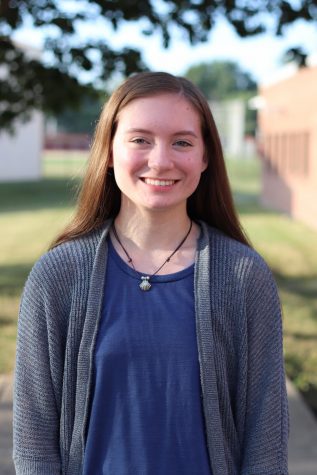
Hello! I’m Haley Miller, Editor-in-Chief of The Journal this year. I joined this publication all the way back at the end of my freshman year, and I can’t...
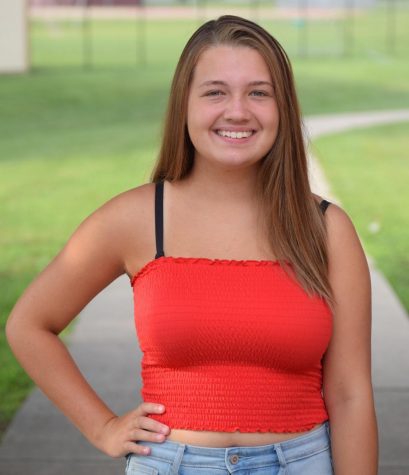
Hi, I’m Bailey! I am a sophomore at SHS and a first year feature writer for The Journal. I enjoy many things such as reading and writing. I have tons...





